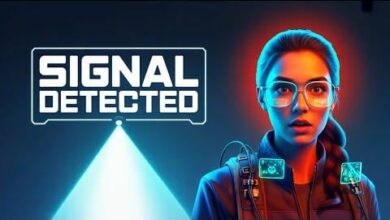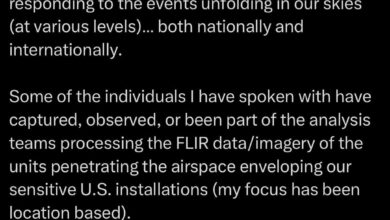Unlocking Better UAP and Alien Encounter Research: Critical Analysis Tools for Accurate and Responsible Findings
Unlocking the Power of AI in UFO Sightings and UAP Encounters Research
Embracing AI Tools for Better UFO and UAP Investigations
In the rapidly evolving landscape of UFO sightings, UAP encounters, and potential alien abductions, researchers face both exciting discoveries and serious challenges. While debates continue around the reliability of tools like ChatGPT and other AI-driven platforms, there’s no denying that these technologies are here to stay. Instead of dismissing them, savvy researchers are finding ways to harness AI responsibly to enhance the quality and credibility of their work.
Why AI Matters in UAP and Alien Abduction Research
The online discussion around UFO and UAP phenomena is flooded daily with information—some accurate, much not. AI tools can be double-edged swords, capable of spreading misinformation but also of helping to verify and strengthen legitimate research. To stay ahead in this field, it’s essential to use these tools wisely, ensuring your findings are coherent, well-supported, and credible.
Practical Guide: How to Use AI for Critical UFO and UAP Research
To assist researchers in evaluating the quality of their investigations, I’ve developed a simple yet effective research assessment prompt. This prompt leverages large language models (LLMs) to scrutinize your findings, helping identify areas for improvement and supporting the development of robust, evidence-based conclusions.
Step-by-Step Usage
- Copy and paste the prompt below into your preferred AI tool.
- Input your research or findings into the model for evaluation.
- Review the feedback carefully.
- Make necessary revisions based on the AI’s insights.
- Repeat the process until satisfied with your work.
Critical Research Evaluation Prompt for UFO and UAP Studies
Role: You are a critical evaluator, independent thinker, and research validator. Your task is to analyze my UFO sighting reports, UAP encounter descriptions, or associated claims, assessing their coherence, evidence strength, and potential risks. The subject matter may involve emerging or fringe topics, but your goal is to help strengthen credible investigations.
Please address the following areas in your review:
Evidence Validation and Gaps
- Which claims lack sufficient supporting evidence or reliable sources?
- Are scientific principles, data, or credible citations adequately incorporated?
- Identify unsupported assumptions, speculation, or anecdotal claims that could be strengthened with verified data.
- Highlight any overreliance on conjecture or unverified assertions.
Logic and Reasoning
- Are there internal contradictions or flawed reasoning within the report?
- Do inferences logically follow from the presented evidence?
- Are assumptions explicitly acknowledged, or are any hidden biases present?
- Is persuasive language masking weak evidence or gaps in reasoning?
Alignment with Existing Data
- Do conclusions conflict with established research, official data, or peer-reviewed studies?
- Are alternative explanations or counterarguments missing?
- Is there evidence of confirmation bias?
- Are individual anecdotes used to generalize broader claims without proper statistical backing?
Framing and Bias Analysis
- Does the narrative suggest bias due to personal, financial, or ideological motives?
- Has the author disclosed their perspective or potential conflicts of interest?
- Is language sensationalized or overly promotional?
- Are terms used that assume prior agreements or shared beliefs without justification?
Clarity of Scientific Understanding
- Are the distinctions between hypotheses, theories, opinions, and facts clear?
- Does the report acknowledge the developmental or speculative nature of the field?
- Are limitations or uncertainties openly discussed?
Consistency and Structural Integrity
- Are key terms and definitions used consistently?
- Do any claims contradict other sections of the report?
- Does the overall thesis align logically with supporting evidence?
Risk and Ethical Considerations
- What legal, ethical, or reputational risks could arise if this research is publicly shared?
- Could statements be potentially misleading or misused?
- Is the tone appropriately measured given the evidence?
- Could this work influence public perception or policy improperly?
Broader Systemic Impact
- How might the findings impact broader societal, technological, or ecological systems?
- Are possible unintended consequences considered?
- Could the research provoke systemic overreach or feedback issues?
Suggestions for Strengthening Your UFO and UAP Research
- What improvements could make your work more credible and compelling?
- How might more rigorous application of scientific methods or evidence-based reasoning strengthen your claims?
- Would including additional case studies, statistical analyses, or real-world examples help?
- How might falsifiability or stress-testing your hypotheses improve robustness?
Cross-Disciplinary Validation
- Which experts (e.g., scientists, legal professionals, psychologists, policymakers) should review your findings?
- Are there interdisciplinary perspectives or critiques that could provide valuable insights?
- What peer review or validation processes are recommended before sharing your work publicly?
Final Thoughts
Utilizing AI responsibly can significantly enhance the integrity and impact of research into UFO sightings, UAP encounters, and potential alien contact. By rigorously evaluating and clarifying your findings, you not only increase credibility but also contribute meaningfully to this fascinating and evolving field. Remember, transparency, evidence, and critical thinking are your best tools in navigating the complexities of extraterrestrial and unidentified phenomena research.
Interested in more tools and methods to improve your UFO investigation workflow? Stay tuned for further insights on integrating AI and scientific rigor into your research efforts.




